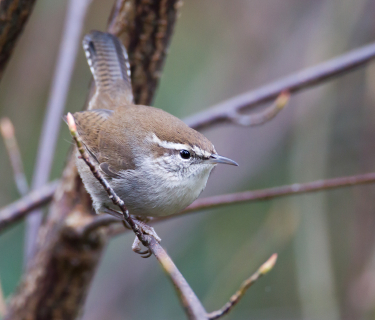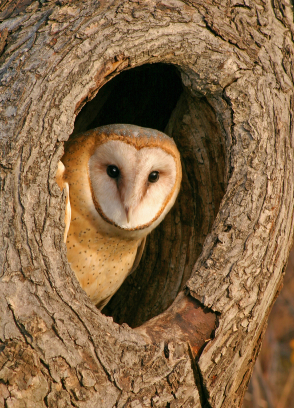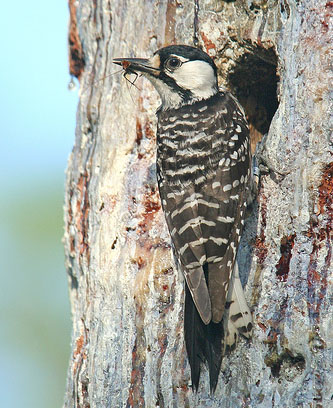Helping Our Endangered Birds
Now that you know a little bit about the challenges birds face, take a closer look at three birds whose populations are declining in the U.S.
This is the
Bewick's wren
(pronounced like
Buicks
). These birds used to be plentiful all over the United States, but now they are rare east of the Mississippi River. There are enough birds left overall that they are not listed as federally endangered by the U.S. government. However, many states have their own endangered species lists to protect animals that may become extinct in their states. Maryland, for example, has put the Bewick's wren on its state list of endangered species because it may soon be completely extinct in our state. Scientists are not entirely sure why the Bewick's wren has been declining, but it may be that other bird species—like the house wren—have moved into its habitat and out-competed the Bewick's wren for food and nesting spots.
This white-faced bird is called a
barn owl
. Barn owls hunt at night for mice, bats and rabbits. They are considered endangered in several states—including Rhode Island, Connecticut and Illinois—because their habitat (mostly fields, open grass and brush areas) is being turned into homes and businesses. That makes it hard for these birds to find places where they like to nest—like in holes in trees and in old barns.
The
red-cockaded woodpecker
is listed as endangered by the U.S. government and is at risk of disappearing from the entire United States. These woodpeckers prefer longleaf pines that are at least 80 years old. Unfortunately, there are not very many of these trees left anymore. Red-cockaded woodpeckers are important in their habitats because the nest cavities (holes) they create can be later used by many different forest animals—including squirrels, snakes, lizards, frogs and other birds.





